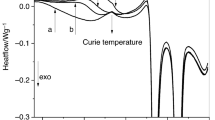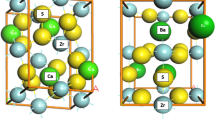Abstract
Purpose
Water of crystallization has been observed to increase plasticity, decrease crystal hardness, and improve powder compressibility and tabletability of organic crystals. This work is aimed at gaining a molecular level insight into this observation.
Method
We systematically analyzed crystal structures of five stoichiometric hydrate systems, using several complementary techniques of analysis, including energy framework, water environment, overall packing change, hydrate stability, and slip plane identification.
Results
The plasticizing effect by lattice water is always accompanied by an introduction of more facile slip planes, lower packing efficiency, and lower density in all hydrate systems examined in this work. Three distinct mechanisms include 1) changing the distribution of intermolecular interactions without significantly changing the packing of molecules to introduce more facile slip planes; 2) changing packing feature into a flat layered structure so that more facile slip planes are introduced; 3) reducing the interlayer interaction energies and increasing the anisotropy.
Conclusion
Although the specific mechanisms for these five systems differ, all five hydrates are featured with more facile slip planes, lower packing efficiency, and lower density.






Similar content being viewed by others
References
Datta S, Grant DJ. Crystal structures of drugs: advances in determination, prediction and engineering. Nat Rev Drug Discov. 2004;3(1):42.
Khankari RK, Grant DJ. Pharmaceutical hydrates. Thermochim Acta. 1995;248:61–79.
Stahly GP. Diversity in single- and multiple-component crystals. The search for and prevalence of polymorphs and Cocrystals. Cryst Growth Des. 2007;7(6):1007–26.
Morris KR. Structural aspects of hydrates and solvates; 1999.
Tian F, Qu H, Zimmermann A, Munk T, Jørgensen AC, Rantanen J. Factors affecting crystallization of hydrates. J Pharm Pharmacol. 2010;62(11):1534–46.
Vippagunta SR, Brittain HG, Grant DJ. Crystalline solids. Adv Drug Deliv Rev. 2001;48(1):3–26.
Braun DE, Griesser UJ. Stoichiometric and nonstoichiometric hydrates of brucine. Cryst Growth Des. 2016;16(10):6111–21.
Newman AW, Reutzel-Edens SM, Zografi G. Characterization of the “hygroscopic” properties of active pharmaceutical ingredients. J Pharm Sci. 2008;97(3):1047–59.
Pudipeddi M, Serajuddin ATM. Trends in solubility of polymorphs. J Pharm Sci. 2005;94(5):929–39.
Wen H, Wang C, Sun CC. Fast determination of phase stability of hydrates using intrinsic dissolution rate measurements. Cryst Growth Des. 2019;19(10):5471–6.
Rekis T, Berzins A, Dzabijeva D, Nakurte I, Ln O, Actins A. Structure and stability of racemic and enantiopure pimobendan monohydrates: on the phenomenon of unusually high stability. Cryst Growth Des. 2017;17(4):1814–23.
Kersten KM, Matzger AJ. Improved pharmacokinetics of mercaptopurine afforded by a thermally robust hemihydrate. Chem Comm. 2016;52(30):5281–4.
Liu F, Hooks DE, Li N, Mara NA, Swift JA. Mechanical properties of anhydrous and hydrated uric acid crystals. Chem Mater. 2018;30(11):3798–805.
Sun CC, Grant DJ. Improved tableting properties of p-hydroxybenzoic acid by water of crystallization: a molecular insight. Pharm Res. 2004;21(2):382–6.
Joiris E, Di Martino P, Malaj L, Censi R, Barthélémy C, Odou P. Influence of crystal hydration on the mechanical properties of sodium naproxen. Eur J Pharm Biopharm. 2008;70(1):345–56.
Kiran M, Varughese S, Ramamurty U, Desiraju GR. Effect of dehydration on the mechanical properties of sodium saccharin dihydrate probed with nanoindentation. CrystEngComm. 2012;14(7):2489–93.
Panda MK, Bhaskar Pal K, Raj G, Jana R, Moriwaki T, Mukherjee GD, Mukhopadhyay B, Naumov P. Flexibility in a molecular crystal accomplished by structural modulation of carbohydrate epimers. Cryst Growth Des. 2017;17(4):1759–65.
Chang S-Y, Sun CC. Superior plasticity and tabletability of theophylline monohydrate. Mol Pharm. 2017;14(6):2047–55.
Khandavilli UBR, Lusi M, Frawley PJ. Plasticity in zwitterionic drugs: the bending properties of Pregabalin and gabapentin and their hydrates. IUCrJ. 2019;6(4):630–4.
Hu S, Mishra MK, Sun CC. Twistable pharmaceutical crystal exhibiting exceptional plasticity and Tabletability. Chem Mater. 2019;31(10):3818–22.
Sun CC, Hou H. Improving mechanical properties of caffeine and methyl Gallate crystals by Cocrystallization. Cryst Growth Des. 2008;8(5):1575–9.
Wang K, Mishra MK, Sun CC. Exceptionally elastic single-component pharmaceutical crystals. Chem Mater. 2019;31(5):1794–9.
Zolotarev PN, Moret M, Rizzato S, Proserpio DM. Searching new crystalline substrates for OMBE: topological and energetic aspects of cleavable organic crystals. Cryst Growth Des. 2016;16(3):1572–82.
Wang C, Sun CC. Identifying slip Planes in organic polymorphs by combined energy framework calculations and topology analysis. Cryst Growth Des. 2018;18(3):1909–16.
Gastone Gilli PG. The nature of the hydrogen bond: outline of a comprehensive hydrogen bond theory: Oxford University Press; 2009.
Edwards AJ, Mackenzie C, Spackman P, Jayatilaka D, Spackman MA. Intermolecular interactions in molecular crystals: What's in a name? Farad Discuss 2017.
Gavezzotti A. Towards a realistic model for the quantitative evaluation of intermolecular potentials and for the rationalization of organic crystal structures. Part I Philosophy CrystEngComm. 2003;5(76):429–38.
Desiraju GR, Vittal JJ, Ramanan A. Crystal engineering: a textbook. World Scientific. 2011.
Turner MJ, Grabowsky S, Jayatilaka D, Spackman MA. Accurate and efficient model energies for exploring intermolecular interactions in molecular crystals. J Phys Chem Lett. 2014;5(24):4249–55.
Dunitz J, Gavezzotti A. Supramolecular synthons: validation and ranking of intermolecular interaction energies. Cryst Growth Des. 2012;12(12):5873–7.
Deringer VL, George J, Dronskowski R, Englert U. Plane-wave density functional theory meets molecular crystals: thermal ellipsoids and intermolecular interactions. Acc Chem Res. 2017;50(5):1231–9.
Turner MJ, Thomas SP, Shi MW, Jayatilaka D, Spackman MA. Energy frameworks: insights into interaction anisotropy and the mechanical properties of molecular crystals. Chem Comm. 2015;51(18):3735–8.
Dey D, Thomas SP, Spackman MA, Chopra D. ‘Quasi-isostructural polymorphism’in molecular crystals: inputs from interaction hierarchy and energy frameworks. Chem Comm. 2016;52(10):2141–4.
Thomas SP, Shi MW, Koutsantonis GA, Jayatilaka D, Edwards AJ, Spackman MA. The eusive structural origin of plastic bending in dimethyl sulfone crystals with quasi-isotropic crystal packing. Angew Chem Int Ed 2017.
Wang C, Sun CC. Computational techniques for predicting mechanical properties of organic crystals: a systematic evaluation. Mol Pharm. 2019;16(4):1732–41.
Sun CC, Kiang Y-H. On the identification of slip planes in organic crystals based on attachment energy calculation. J Pharm Sci. 2008;97(8):3456–61.
Turner JJM, Wolff SK, Grimwood DJ, Spackman PR, Jayatilaka D, Spackman MA. CrystalExplorer17. Available from: http://hirshfeldsurface.net.
Wang C, Sun CC. The landscape of mechanical properties of molecular crystals. CrystEngComm. 2020;22(7):1149–53.
Gavezzotti A. The “sceptical chymist”: intermolecular doubts and paradoxes. CrystEngComm. 2013;15(20):4027–35.
Li J, Abramov YA, Doherty MF. New tricks of the trade for crystal structure refinement. ACS Central Science. 2017;3(7):726–33.
Venu N, Vishweshwar P, Ram T, Surya D, Apurba B. (S)-3-(Ammoniomethyl)-5-methylhexanoate (pregabalin)DRL IPDOIPM communication number: 00061. Acta Crystallographica Section C. 2007;63(5):o306–8.
Roy S, Quiñones R, Matzger AJ. Structural and physicochemical aspects of Dasatinib hydrate and anhydrate phases. Cryst Growth Des. 2012;12(4):2122–6.
Zhang Q, Lu L, Dai W, Mei X. Polymorphism and isomorphism of Huperzine a solvates: structure, properties and form transformation. CrystEngComm. 2014;16(10):1919–26.
Khomane KS, More PK, Raghavendra G, Bansal AK. Molecular understanding of the compaction behavior of indomethacin polymorphs. Mol Pharm. 2013;10(2):631–9.
van de Streek J, Motherwell S. New software for searching the Cambridge structural database for solvated and unsolvated crystal structures applied to hydrates. CrystEngComm. 2007;9(1):55–64.
Bajpai A, Scott HS, Pham T, Chen K-J, Space B, Lusi M, Perry ML, Zaworotko MJ. Towards an understanding of the propensity for crystalline hydrate formation by molecular compounds. IUCrJ. 2016;3(6):430–9.
Clarke HD, Arora KK, Bass H, Kavuru P, Ong TT, Pujari T, Wojtas L, Zaworotko MJ. Structure−stability relationships in Cocrystal hydrates: does the promiscuity of water make crystalline hydrates the Nemesis of crystal engineering? Cryst Growth Des. 2010;10(5):2152–67.
Infantes L, Motherwell S. Water clusters in organic molecular crystals. CrystEngComm. 2002;4(75):454–61.
Healy AM, Worku ZA, Kumar D, Madi AM. Pharmaceutical solvates, hydrates and amorphous forms: a special emphasis on cocrystals. Adv Drug Deliv Rev. 2017;117:25–46.
Braun DE, Kahlenberg V, Griesser UJ. Experimental and computational hydrate screening: cytosine, 5-flucytosine and their solid solution. Cryst Growth Des 2017.
Vreeman G, Wang C, Reddy CM, Sun CC. Exceptional powder Tabletability of elastically flexible crystals. Cryst Growth Des. 2021;21(12):6655–9.
Sun C, Grant DJW. Influence of crystal shape on the tableting performance of L-lysine Monohydrochloride Dihydrate. J Pharm Sci. 2001;90(5):569–79.
Sun C, Grant DJW. Effects of initial particle size on the tableting properties of l-lysine monohydrochloride dihydrate powder. Int J Pharm. 2001;215(1):221–8.
Acknowledgments and Disclosures
We thank the Minnesota Supercomputing Institute (MSI) at the University of Minnesota for providing resources that contributed to the research results reported in this paper. The authors declare no competing interest.
Author information
Authors and Affiliations
Corresponding author
Additional information
Publisher’s Note
Springer Nature remains neutral with regard to jurisdictional claims in published maps and institutional affiliations.
Supplementary Information
ESM 1
(DOCX 2262 kb)
Rights and permissions
About this article
Cite this article
Wang, C., Sun, C.C. Mechanisms of Crystal Plasticization by Lattice Water. Pharm Res 39, 3113–3122 (2022). https://doi.org/10.1007/s11095-022-03221-1
Received:
Accepted:
Published:
Issue Date:
DOI: https://doi.org/10.1007/s11095-022-03221-1




